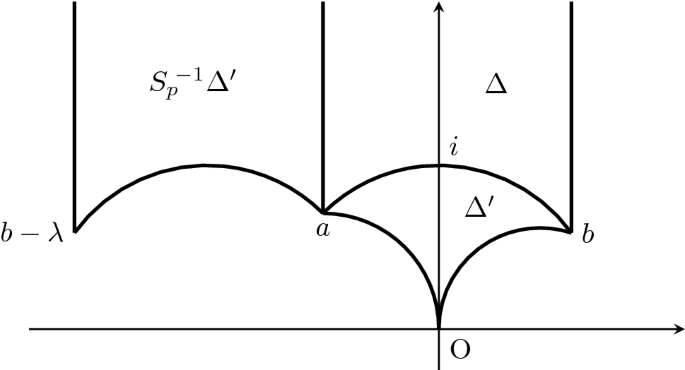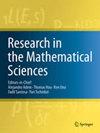模结,自同构形式,三角群的Rademacher符号。
IF 1.2
3区 数学
Q1 MATHEMATICS
引用次数: 4
摘要
E。Ghys证明了模块结的连接数和s3中“缺失的”三叶草k2,3与一个高度普遍存在的函数的值一致,这个函数被称为SL 2z的Rademacher符号。在本文中,我们用三角形群Γ p, q代替SL 2 Z = Γ 2,3,对于任意2≤p q的整数对(p, q)。我们引用了Γ p, q的谐波质量形式理论,引入了Rademacher符号ψ p, q的概念,并提供了几个表征。除此之外,我们推广了在s3和透镜空间中围绕任何“缺失”环面结kp, q的模结的Ghys定理。本文章由计算机程序翻译,如有差异,请以英文原文为准。

Modular knots, automorphic forms, and the Rademacher symbols for triangle groups.
É. Ghys proved that the linking numbers of modular knots and the "missing" trefoil in coincide with the values of a highly ubiquitous function called the Rademacher symbol for . In this article, we replace by the triangle group for any coprime pair (p, q) of integers with . We invoke the theory of harmonic Maass forms for to introduce the notion of the Rademacher symbol , and provide several characterizations. Among other things, we generalize Ghys's theorem for modular knots around any "missing" torus knot in and in a lens space.
求助全文
通过发布文献求助,成功后即可免费获取论文全文。
去求助
来源期刊

Research in the Mathematical Sciences
Mathematics-Computational Mathematics
CiteScore
2.00
自引率
8.30%
发文量
58
期刊介绍:
Research in the Mathematical Sciences is an international, peer-reviewed hybrid journal covering the full scope of Theoretical Mathematics, Applied Mathematics, and Theoretical Computer Science. The Mission of the Journal is to publish high-quality original articles that make a significant contribution to the research areas of both theoretical and applied mathematics and theoretical computer science.
This journal is an efficient enterprise where the editors play a central role in soliciting the best research papers, and where editorial decisions are reached in a timely fashion. Research in the Mathematical Sciences does not have a length restriction and encourages the submission of longer articles in which more complex and detailed analysis and proofing of theorems is required. It also publishes shorter research communications (Letters) covering nascent research in some of the hottest areas of mathematical research. This journal will publish the highest quality papers in all of the traditional areas of applied and theoretical areas of mathematics and computer science, and it will actively seek to publish seminal papers in the most emerging and interdisciplinary areas in all of the mathematical sciences. Research in the Mathematical Sciences wishes to lead the way by promoting the highest quality research of this type.
 求助内容:
求助内容: 应助结果提醒方式:
应助结果提醒方式:


